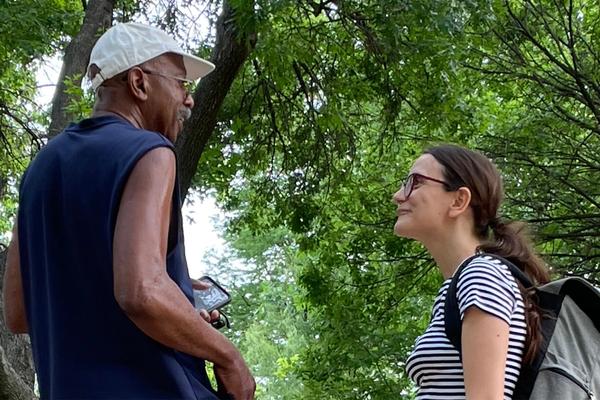New product and service visions for people with hearing loss
A foundational research study aimed at defining and detailing new opportunities for Samsung, to expand their computational hearing offer
What values do people associate with hearing? What needs and coping strategies emerge when people start to experience specific sensitivities to sounds and/or mild or strong hearing loss? What role could design and technology play in improving human’s hearing ability?
We combined in-depth interviews with people experiencing different hearing struggles and needs (about 30 participants), followed by a quantitative study aimed at refining and validating insights (about 3.000 responses). The information collected during the research helped identify transversal values and needs, as well as deep-dive into user archetypes and their experience journeys.
The research generated a strategic framework that connects user needs to design opportunities, principles and initial ideas for new products and features. Validated concepts derived from the research, related to Noise Control and Voice Detect, have been later integrated in the first edition of Galaxy AI-powered Buds.
Wearing a pair of glasses is perceived as a desirable and cool experience, even for people who don’t have any eyesight issues. Why this doesn’t happen with hearing aid devices? What opportunities emerge if we leverage AI and other tech developments to rethink assisted hearing?

Starting from the first Covid-19 lockdown, remote calls and voice-based interactions have become a steady part of many people’s daily lives, shaping new ways of working and communicating. At the same time, people were redefining their ways of interacting in public spaces and engaging with others, wearing masks, and learning to keep physical distance for safety reasons.
All these aspects were highly challenging for people experiencing hearing difficulties. For example, they could suddenly not rely on lip reading and adjusting proximity (essential coping strategies for people with mild loss). Also, video calls don’t usually perform well with hearing aid devices, and people with strong hearing loss had to start taking their hearing assistance off during remote meetings, or compensate by using standard in-ear devices at high volume.
In this context, Samsung saw the opportunity to conduct an in-depth exploration to derive strategic insights and shape new types of experiences. The research was aimed at identifying design principles and opportunities that could inspire a variety of interventions: from integrating new features on existing earbuds, tablets, mobile phones, and TVs, to designing a brand-new type of hearing assistance.

The first round of research was grounded on in-depth interviews with about 30 people with different hearing habits and needs, combined with a structured analysis of hearing devices’ reviews and related conversations online.
Having participants representing a wide range of hearing abilities and needs, from those with mild impairments to individuals with auditory overloads sensitivity, as well as people with specific interests in advanced hearing performance and safety (e.g. musicians) allowed to approach hearing experiences not as a challenge tied to a specific condition, but as part of a broader spectrum of needs.
The research helped collect inspiration from a variety of emerging practices, already enabled by technology - like watching movies with captions to compensate for the possibility of missing something or activating the noise reduction to avoid sensory overload in crowded contexts. Those were elements that could be improved and made accessible to everyone, in a variety of contexts of use.
Another interesting element that emerged during the study was the increasing acceptance of wearing earbuds in public and while interacting with others, showing a possible evolution in the perception of hearing aid devices from a medical stigma to a tool for empowerment. In the words of a participant wearing hearing aids: “I feel like a superhero. I can silent what’s on my left and focus only on my friend on the right when dining out”.
Once we defined an initial set of insights, opportunities and concepts, they were validated with a broader audience (about 3.000 respondants) in order to consolidate the understanding of emerging needs and to size the potential interest around specific ideas.
Focusing the opportunity framework on values such as confidence, empowerment, and safety allowed us to envision solutions leveraging the potential of UX design and AI technologies to the diverse and dynamic ways people engage with sound in their daily lives. For example, AI-based noise canceling in loud environments proved to be a valuable feature, enhancing listening comfort for different users—whether someone with mild hearing loss, a neurodivergent person sensitive to noise or anyone experiencing temporary hearing sensitivity due to a headache or fatigue.
Validated concepts have been later integrated in the first edition of Galaxy AI powered Buds, while the experience framework and research insights keep informing continuous product developments and refinement cycles.

